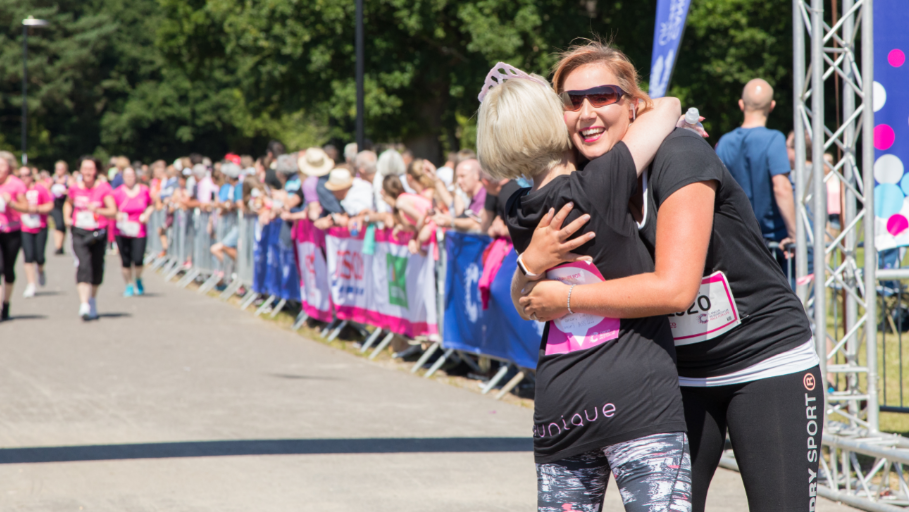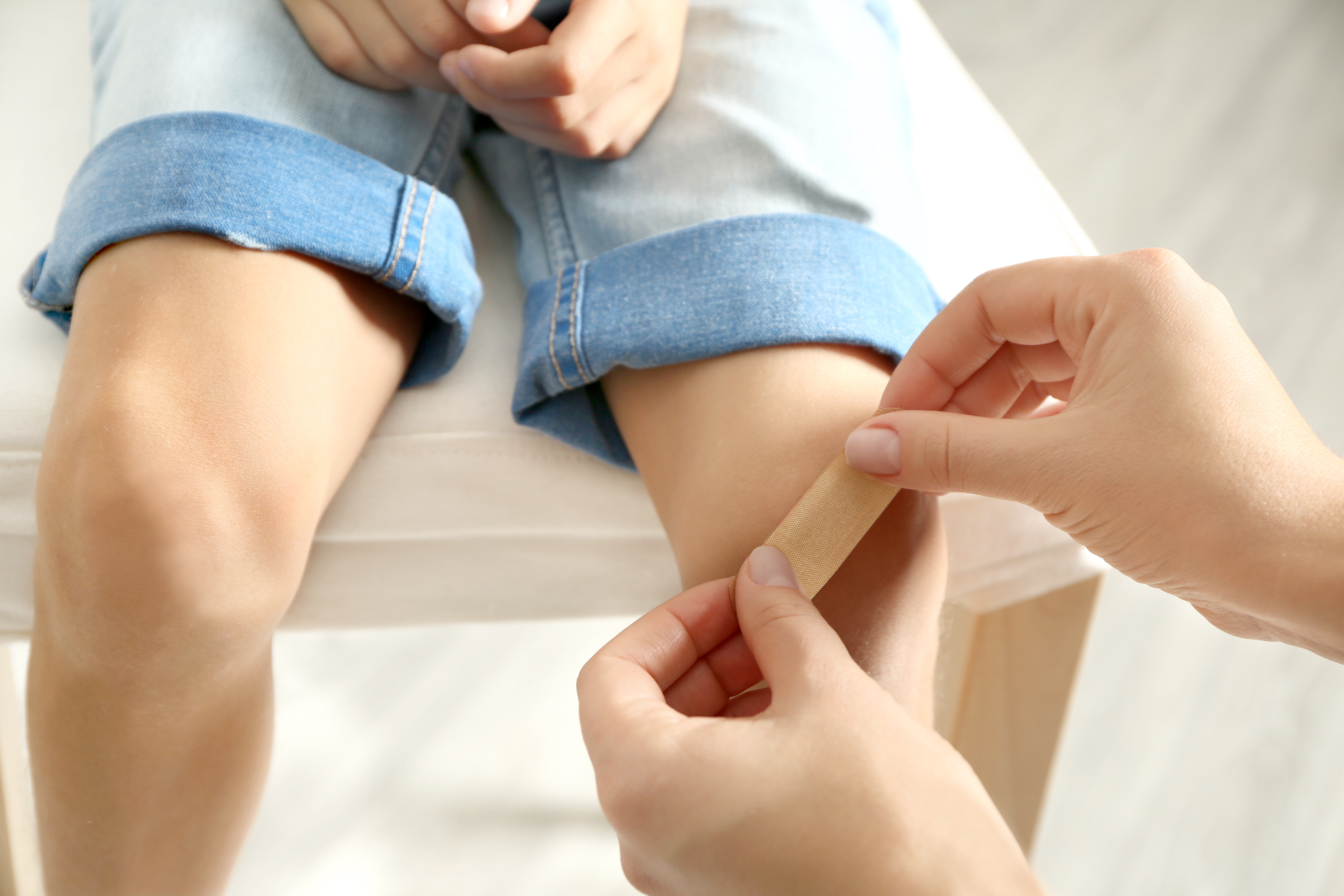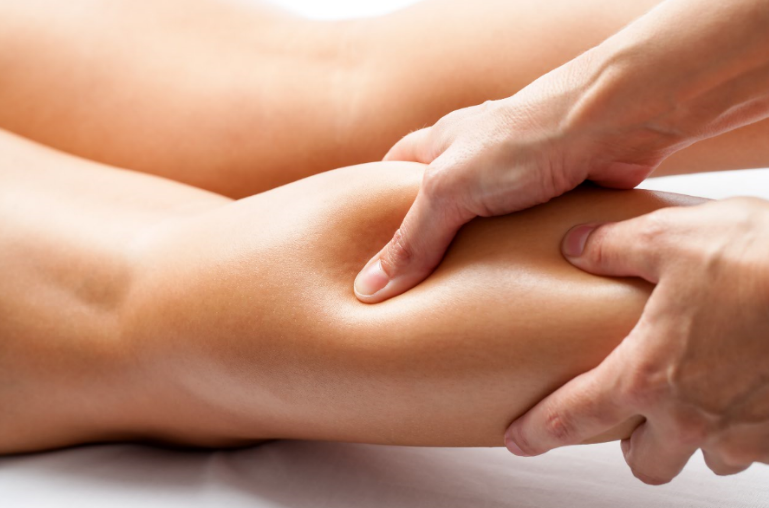How to stay injury free for your first 5K run
By Mike James | 8th January 2019 | General, Advice
Sports Injury Fix’s resident running expert Mike James has spent over 20 years treating novice to elite runners worldwide from 1500m to 100-mile races. He is also a competitive runner who has completed over 100 marathons and ultra-marathons, so when he talks, we tend to listen.

The 5km road race, also referred to as the 5K, is the shortest of the most common road running distances. Among road running events, the 5K distance is extremely popular with novice runners or joggers. The 5K distance is well suited for people looking to improve or maintain their general physical fitness, rather than develop long-distance running abilities. The combination of the activity's simplicity, its low cost, and generally medium exercise intensity mean that it is often recommended by medical organisations and healthcare professionals as a method of general health improvement.(1,2)
Many popular programmes such as the couch to 5K (3) plan have become common place amongst those either looking for a challenge to improve fitness, raise funds and awareness for charity, or those looking at commencing a journey of discovery into a life of running. Branded, nationwide races such as “Colour Run”, “Park Run” and “Race for Life” have blossomed over the last 5-10 years and are now readily available for all to participate in within a few short miles from home. The 5K distance is particularly popular among women and a number of annual women-only races are organised over this distance. Running USA's 2012 analysis of participation in American road races showed that 58% of participants in 5K races were women.(4)
Running related injuries are common, especially in novice runners. (5-7) Often it is the result of “too much, too soon” and simple errors in training and preparation.(8,9) So, how can we prevent, or more accurately perhaps, reduce the risk of encountering such problems and maximising our chances of getting to the start and finish lines? here are the top tips from sportsinjuryfix.com.
Goal Setting

This should be the first thing any 5k runner does. Ask yourself, what do I want to achieve? Are you aiming to simply get through the 3.106 miles and cross the finish line? or are you aiming for a specific time?. Before any plans are formulated, you must determine what it is you are aiming for. Every aspect of the coming weeks or months will be determined by your goals. Duration, intensity, frequency of training, location should be based on this coupled with your current fitness levels.
Choose the right training regime
These days there are a multitude of readily available “off the shelf” training plans, even the NHS offer one. For most, these offer a sensible and realistic progressive regime for the first timer or the runner returning after a period of inactivity. Sometimes however, they will still require some tailoring to suit your work and life commitments. Walk and/or walk and run plans are also a perfectly safe way to start for some and offer a sensible balance of training and recovery.
Prepare for the training regime
Many novice runners develop injuries by simply failing to prepare for a regime. Unfortunately, for many, there is a gap between current ability and the level needed even to commence a 5k regime. Plan backwards and add a few weeks as needed prior to commencing the regime building a sufficient base level of fitness, which may include a little bit more walking or low impact activity to improve overall fitness.
Get Strong!

Recent years have seen an increase in the evidence supporting Strength and Conditioning (S&C) for endurance sports. Research suggests that S&C can potentially reduce overuse injuries by almost 50% and improve 5k performance.(10,11) I would argue that EVERY runner would benefit from including a little Strength work into their regime to assist their bodies to adapt and manage training loads. A general approach, largely able to be performed at home should suffice, we have produced a simple regime for you to try here. If in doubt, seek advice from a professional regarding specific exercises for running.
Manage those new aches and pains

Unfortunately, the demands of starting to run inevitably often produce injury. Thankfully, they are often just niggles and largely not serious in nature. Seek advice and guidance from one of our many experts at https://www.sportsinjuryfix.com/, explain your plans and work together to address these issues, allowing you the best chance of completing the training and race ahead.
Time Management
For many novice runners, finding the balance between work, family, social and training commitments can be the hardest factor to get right. Try to plan novel ways to integrate your training into your daily life, whilst minimising interruption to your other commitments. For example, can you use a work commute to train, can you train early in the morning or after the little ones are in bed? Can you train with friends and family? maybe someone would like to join you for part of a run, many people run whilst their children cycle alongside. Ultimately, this, as most aspects are, is a very individual component, sit down and discuss how to manage these things with the people involved.
Pick the right team
No successful runner achieves success on their own. The running world is packed with people who support and encourage each other, and events like Park Run have fostered remarkable groups and communities of runners supporting each other. Consider Growing a network of therapists, runners, coaches, friends and loved ones that you can turn to when needed.
Be consistent, but flexible
Consistency is the key to running success. Stick to your plans, commit to the regime. However, life gets in the way sometimes and other commitments and / or injuries can side track you from time to time. Don’t chase the sessions you miss, don’t cram extra miles or speed into follow up sessions. If you are training correctly 80% of the time, then you will almost certainly achieve your goals. It is better to line up at the start line, slightly “undercooked” than “overcooked”. Injuries and the potential for injury will be far greater if you lack the ability to listen to the body and use a sprinkling of common sense.
Recover

In all my years of competing, treating and coaching runners, this is the single biggest factor that is neglected and ultimately leads to injury. It is the fine balance between stressing the body and allowing it to recover that aids performance and reduces injury risk.
Eat well, sleep well, hydrate and enjoy down time with friends and family – you will be earning it. Much debate exists regarding the effectiveness of tools such as foam rollers / trigger point devices, tapes, massage, compression clothing, cryotherapy and heat, and yes there will always be a large placebo effect to consider. But as long as you are training, strengthening and recovering well, then these tools can help get you to the start line.
I regularly see many runners in training for a “check-up”, some soft tissue work and other modalities to help them recover and relax in order to keep training. Visit sportsinjuryfix.com to find an expert near you who can help you find what what will work for you. Remember – train hard, recover harder!.
Take home message:
· Train wisely – increase load on the body gradually, factor in enough recovery – this is where we improve!. Quality trumps quantity every time.
· Get strong and stay strong as it appears to be the biggest factor we can actively affect in reducing injury risk and improving performance.
· Be consistent, but flexible. – anyone who achieved anything remarkable did it through consistency. Be the Bamboo! – be committed and stick to your plans, but always be prepared to bend a little if needed but get back on the plan as soon as possible!
And remember……… as your journey into the 5K run begins……. try to always enjoy it, it’s fun!

References
1. UK Chief Medical Officers’ Guidelines (2011) Start Active, Stay Active:
2. Lee D, Pate R, Lavie C, et al. (2014) Leisure-Time Running Reduces All-Cause and Cardiovascular Mortality Risk. Journal of the American College of Cardiology;64(5):472-481.
3. https://www.nhs.uk/live-well/exercise/get-running-with-couch-to-5k/
4. 2012 State of the Sport Part I: Growth of Women's Running. Running USA (2012-05-09). Retrieved on 29-08-2018.
5. Bredeweg S, Zijlstra S, Bessem B, et al. (2012) The effectiveness of a preconditioning programme on preventing running-related injuries in novice runners: a randomised controlled trial. Br J Sports Med. ;46:865-870
6. Buist I, Bredeweg S, van Mechelen W, et al. (2008) No effect of a graded training program on the number of running-related injuries in novice runners: a randomized controlled trial.
Am J Sports Med.36:33-3.
7. Nielsen R, Buist I, Sørensen H, et al. (2012) Training errors and running related injuries: a systematic review. Int J Sports Phys Ther.7:58-7
8. Meeuwisse W, Tyreman H, Hagel B, et al. (2007). A dynamic model of etiology in sport injury: the recursive nature of risk and causation. Clin J Sport Med. 17:215-219
9. Shrier I. (2007).Understanding causal inference: the future direction in sports injury prevention. Clin J Sport Med.17:220-224.
10. Lauersen J, et al. (2014). The effectiveness of exercise interventions to prevent sports injuries: a systematic review and meta-analysis of randomised controlled trials. Br J Sports Med; 48:871–877.
11. Karsten, B., et al. (2016). The Effects of a Sport-Specific Maximal Strength and Conditioning Training on Critical Velocity, Anaerobic Running Distance, and 5-km Race Performance. Int J of Sp Phys and Perf ;1, 80 -8.
